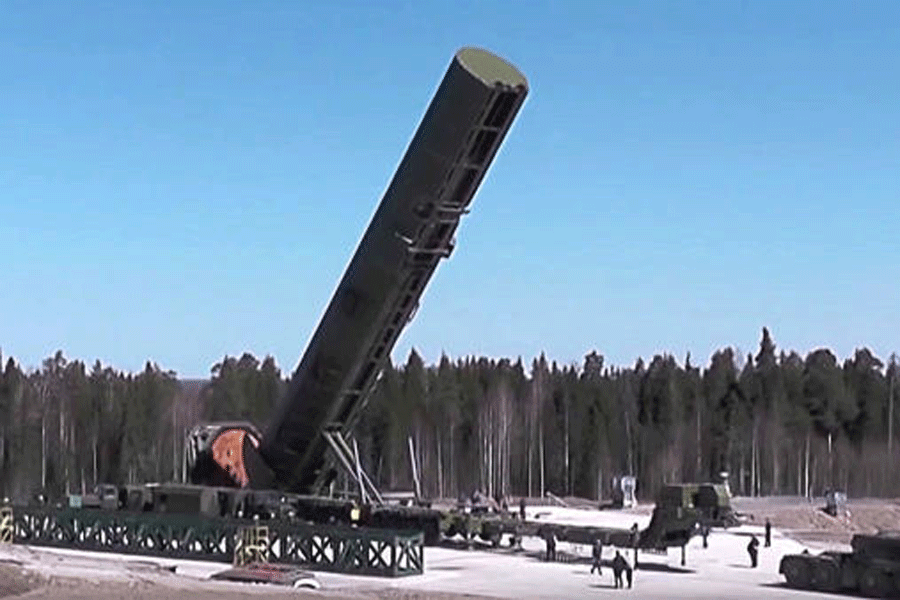The head of the Russian space agency said on Friday that the Sarmat intercontinental ballistic missile, which Moscow claims can deploy 10 or more nuclear warheads and move at hypersonic speeds to outwit defences, had been put “on combat duty”, according to state media outlet RIA Novosti.
Pavel Luzin, a Russian military analyst, said the announcement meant that the missile had been deployed in a silo and was ready to be used. That readiness, however, might be more “on paper” than in reality, he added, given the Sarmat’s limited amount of testing.
The space agency director, Yuri Borisov, did not give details of what he meant by “combat duty”, nor did he say how many of the missiles had been deployed or where.
In April 2022, Russia announced that it had successfully launched the Sarmat. At the time, President Vladimir Putin said the missile would show Russia’s adversaries that they needed to “think twice” before threatening his country.
Friday’s announcement appeared to be an attempt to send a further signal to the West, experts said: a warning that increased western aid to Ukraine could have dangerous consequences for the world, even if the Sarmat missiles themselves are not destined for the battlefield there.
“The Kremlin is concerned that its nuclear threats do not work anymore and is trying to revive the fear of Russian nuclear weapons in the US and Europe,” Luzin said.
The fear that Russia might use nuclear weapons was once considered a relic of the Cold War, but several factors have revived them as a military and diplomatic issue, noted Dr Matthew Kroenig, an expert on strategic competition with Russia and China at the Atlantic Council and a political science professor at Georgetown University. Those factors include Russia’s repeated threats to use nuclear weapons since it invaded Ukraine last year, the hostile relations between China and the US and North Korea’s development of its own missiles.
Washington once faced Moscow alone as a possible nuclear threat. Now, the US has to develop a policy to deal with three nuclear powers at the same time, Kroenig said.
Russia’s nuclear arsenal, the world’s largest, is its main claim to status as a great power, experts said, and the announcement was intended to underscore that to both foreign and domestic audiences.
In Washington, White House spokesperson John Kirby told reporters he could not confirm the Russian reports that the Sarmat was combat-ready.
A US official, who lacked authorisation to make a statement on the record but spoke on the condition of anonymity, said the deployment had not elevated US fears of a nuclear escalation and appeared to be low-level posturing.
Thomas Karako, a senior fellow at the Center for Strategic and International Studies in Washington, concurred. “There’s some sabre-rattling going on. We’ve seen this train coming for a long time. Russia has been recapitalising its nuclear arsenal for five or 10 years. We’re now seeing the fruit of that investment.”
Kroenig said the Sarmat represented the culmination of a Russian modernisation effort, while US efforts to modernise were just getting started. He noted that the US still relied on Minuteman missiles last upgraded in the 1970s. In contrast to Russia’s claims that the Sarmat can carry 10 nuclear warheads, he added, the Minuteman can carry 3.











